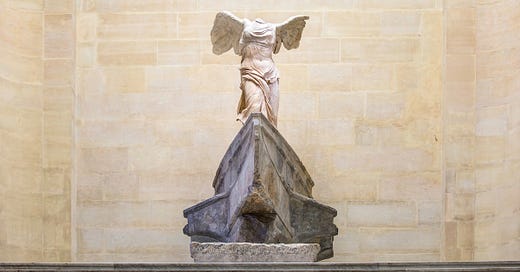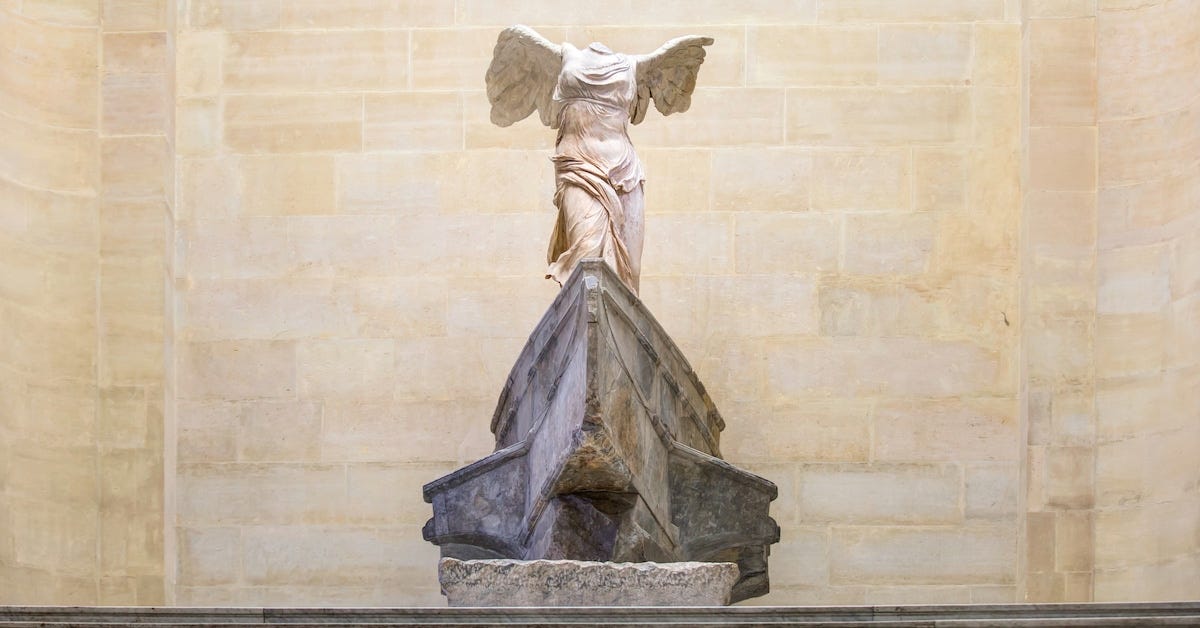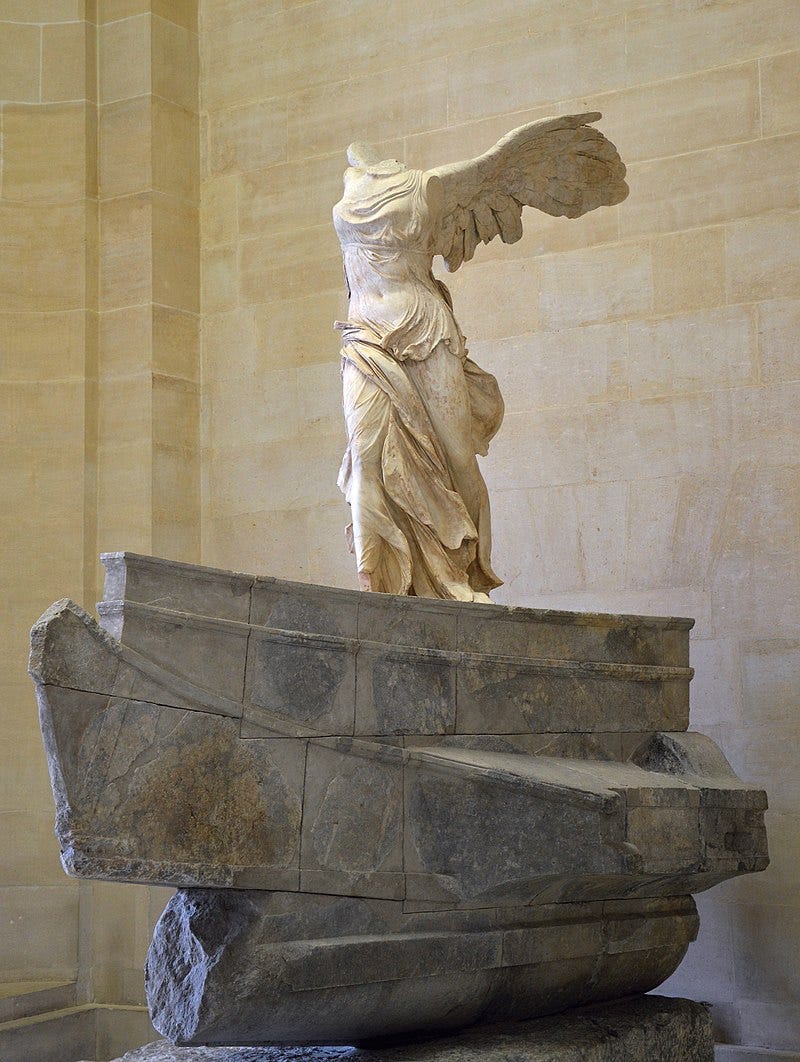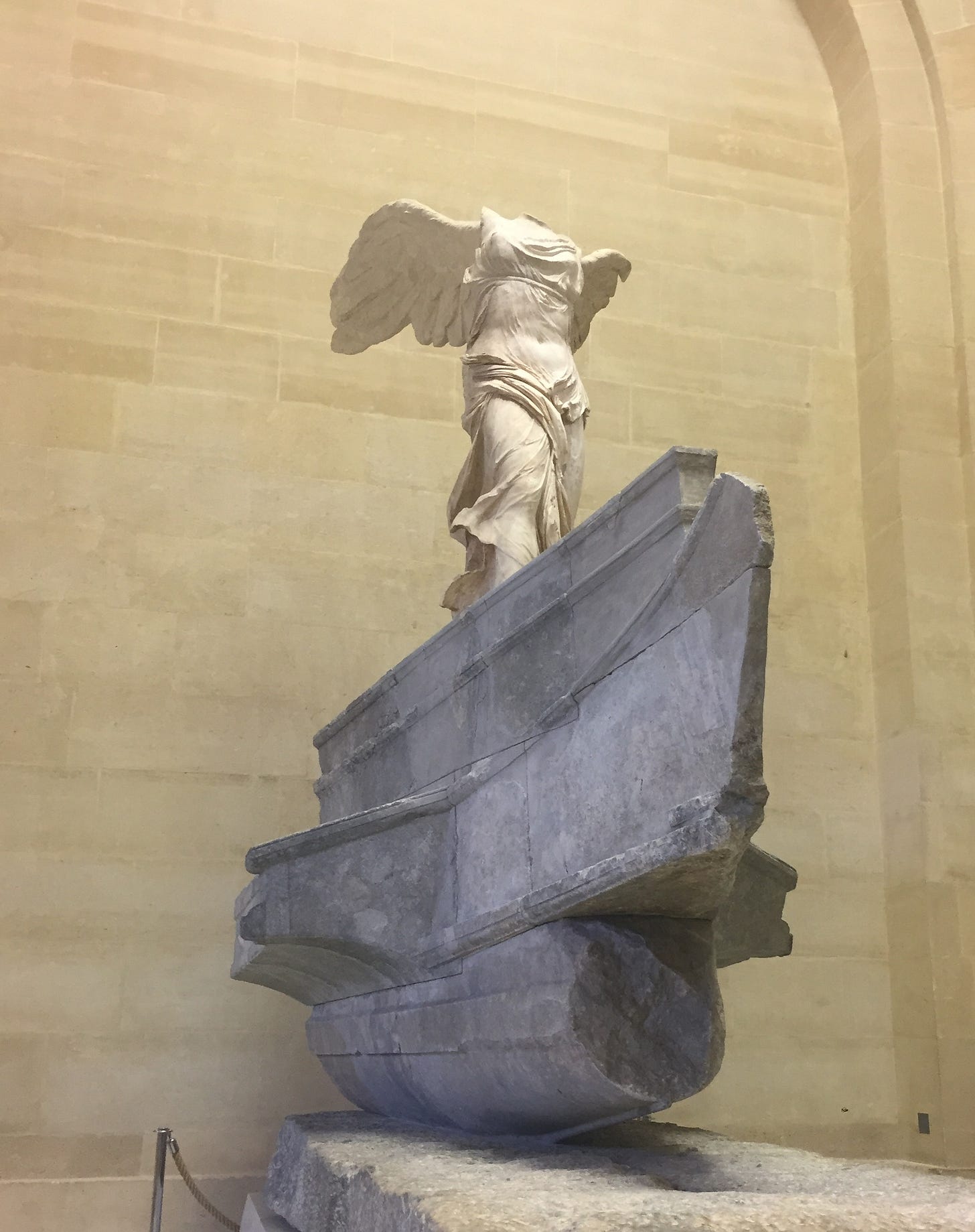Standing confidently at the prow of a ship, the Greek goddess of victory Nike emits spirit, lightness, and femininity as an offering at the Sanctuary of the Great Gods on the island of Samothrace. What makes this statue so special is that it's incredibly rare to find original Greek marble statues in their exact location — not to mention still largely intact! She is still surrounded by some mystery, as many interesting women are. Nike was likely painted, as many statues were at the time. She's dressed in a typical Greek chiton, the drapes conveying an invisible breeze blowing through the divine. The head and arms are lost, except for her right hand found in 1950. Her fingers are outstretched, possibly indicating a gesture of greeting. We otherwise can't draw any details about her face or how she was holding her arms. It's unclear whether she was taking off in flight or leading the ship; her right leg bears her weight, and her left leg is set back. With her torso pushing forward and her wings extending backwards, you immediately feel her confident, imposing, yet graceful presence. The wings are particularly impressive; their construction rarely seen in earlier Greek sculpture. The sculptor created slots on the back where the wings were inserted. They were designed with a downward slope so that the weight of the wings rested primarily against the body, not needing external support. This statue is actually about 8 feet (2.44 meters) tall, and her wings span 9 feet (2.75 meters). I've always found marble statues quite impressive; the ability to make stone look as soft as silk requires a level of patience and perseverance of a different time.
Nike isn't just sportswear; she is the personification and Goddess of victory, in war and athletic competitions. Usually worshipped alongside other deity like Athena, she's rarely mentioned in Greek myths, so we don't know anything about her personality or temperament. However, her distinct image is regularly featured in Greek art like pottery and sculptures; typically depicted as a winged, youthful woman crowning gods or athletes with leafy circlets, or holding palm fronds symbolizing victory. Another well-known example of Nike is the fifth-century Nike of Paionios at the Sanctuary of Zeus at Olympia, commemorating a Peloponnesian War victory.
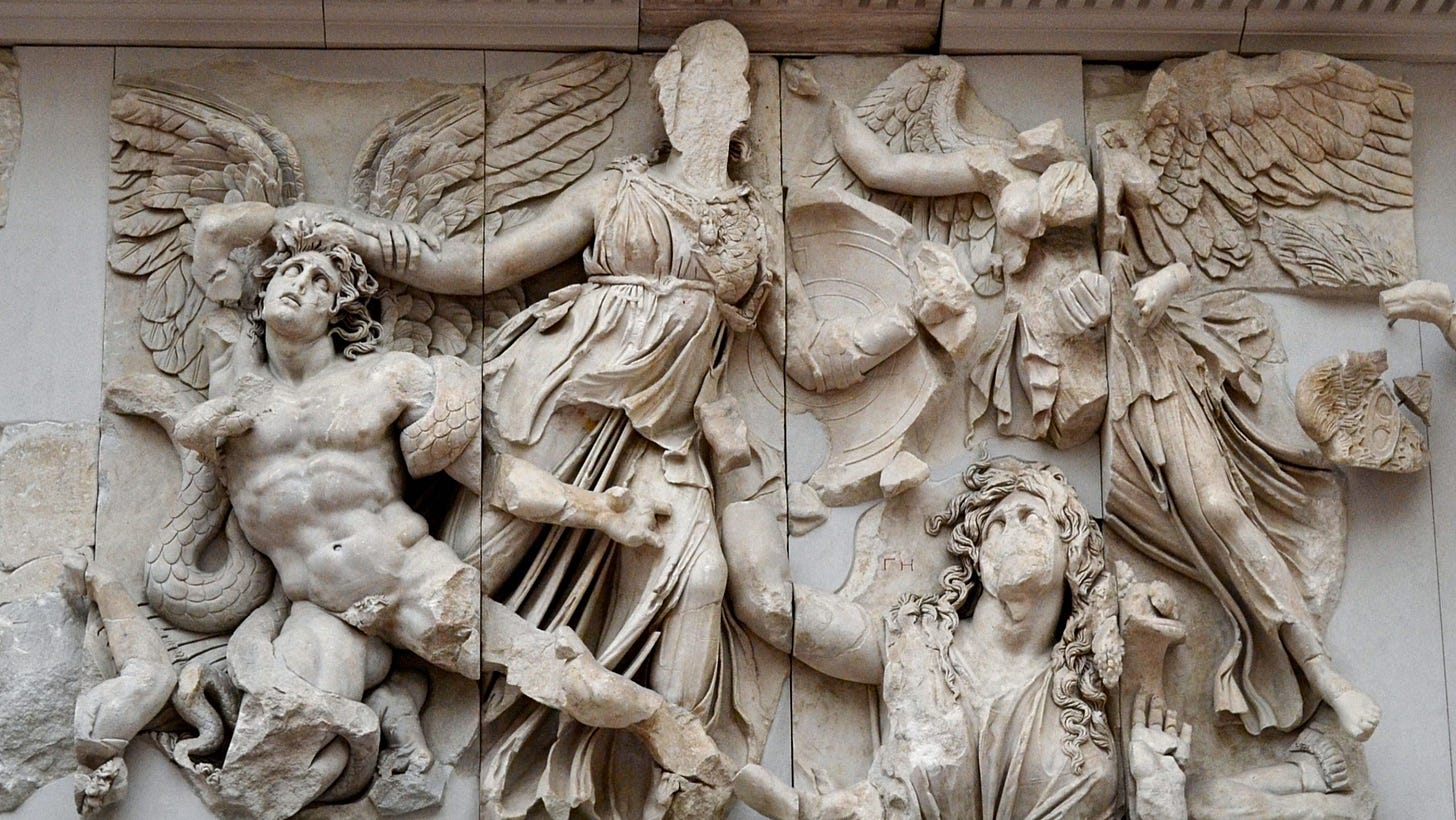
Hellenistic art, especially sculpture, shifted focus towards realism and human emotion, capturing personality and introspection, in contrast to the idealized forms of the prior Classical period. Sculpture started to engage with the space around it and showed more movement, becoming part of the observer’s space.
A Cult and Some Propaganda
The story behind this statue is a lot more interesting than a religious relic made for worship. I bet you would never have guessed there was a cult lurking around. Nothing is really known about the cult of the Great Gods; naturally, secrecy was integral. Worshippers needed to be initiated before they were allowed to participate. The local population of Samothrace was small, but worshippers (especially in the Hellenistic and Roman periods) regularly visited to participate in religious rites hosted by the cult. The sanctuary was located in a narrow valley, with buildings located on the ground with terraces in the hillsides. Nike was on one of the highest points of the sanctuary, on a hill on the western slope.
One of the only things we know about the cult is that they promised their members safety at sea. Because of this, it makes sense that a military leader would have dedicated a monument commemorating a naval victory at Samothrace. The dedicatory inscription, common on many Greek statues, didn't survive so we don't actually know who dedicated the statue or what it was truly for. Hellenistic naval battles were common during this period. Triumphs were widely advertised and celebrated with victory monuments to represent the empire's military power; an important component of royal propaganda. Sound familiar?
Scholars argue over a number of possible battles Nike commemorated. Most theories argue it was a victory over the island of Rhodes, carved by the sculptor Pythokritos in Rhodes circa 190 BCE. This is partially based on the material of the ship the statue stands on; it's grey marble from Rhodes. The statue is made of white Parian marble, known to be a superior material in the ancient world for sculpture. It's likely this was a special order, intended to make a statement. It weighs 30 tons, which would have been a full shipload on a typical merchant ship back in the day.
You can see this at the Louvre in Paris, where it's been since 1883, 20 years after its discovery. She was discovered by Charles Champoiseau, the French Vice‑Consul of Turkey in 1863.


